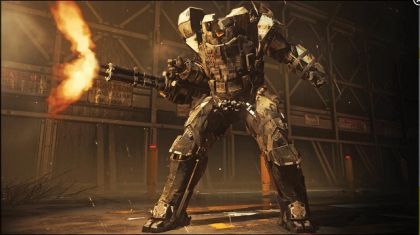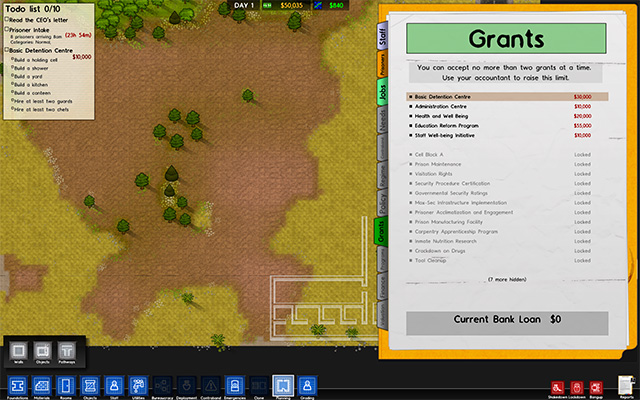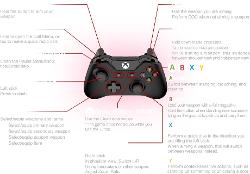

It’s been over two decades since consumers were exposed to a brand new Kid Icarus title, and during this time the gaming landscape has changed significantly. The series remained stagnant until the angelic protagonist Pit was added to the Super Smash Bros. Brawl roster. Finally, fans of the cult classic had something to whet their insatiable appetites. I guess Smash Bros. creator Masahiro Sakurai felt just as jazzed about Pit’s triumphant return as fans did, because he then proceeded to begin development on Kid Icarus: Uprising for the Nintendo 3DS.
After several years worth of rumors and speculation leading up to the game’s official reveal at E3 2010, Kid Icarus: Uprising is finally available on store shelves. Die-hard fans who’ve been waiting for a follow up to the long-forgotten franchise are likely beyond excited for Uprising‘s release. With an extensive amount of single-player options, collectibles, and online multiplayer, the return of Pit is one of the best adventures that can be had on the Nintendo 3DS. That being said, the game is not perfect, and there are a few issues that become immediately apparent after spending even a small amount of time with title.
First things first, it should be known that this new Kid Icarus is nothing like the previous two installments that released on the NES and GameBoy over 20 years ago. Ditching the side-scrolling platforming elements of old for something new entirely – an on-rail shooter/third-person shooter hybrid. The on-rail shooter gameplay is reminiscent of another Nintendo classic Star Fox, but these segments often take up less than 5 minutes of the opening to every level. The third-person shooting aspect, on the other hand, accounts for a majority of the gameplay, and sadly this is where the biggest faults with the game can be found.
Aiming while flying or on the ground is done by using the 3DS’ touchscreen. Touchscreen controls work well for the on-rail segments in every level, but the second Pit lands players are going to find themselves in unfamiliar territory. Moving around with the circle pad is easy enough, but initially it’s a little difficult to turn Pit around to either collect treasure or defeat enemies behind him. The game itself does come packaged with a plastic mount to help make the controls a little bit easier, and it helps a lot, but that doesn’t change the fact that the controls would have benefited from dual Circle Pads. Still, after a few levels the controls are graspable, and you’ll find yourself dodging attacks, bludgeoning foes, and opening fire on enemies with the best of them.
The levels in this game can never be accused of looking boring, and each segment looks radically different from the last. Pit will fly over a massive war, grassy hills, cities, the underworld, and even a space pirate ship. There’s certainly no lack of original locations in Kid Icarus: Uprising, and the game actually does a service to fans by breaking the campaign down into bite-sized levels. Each level will take anywhere from 10-20 minutes to complete, and thanks to the handy-dandy checkpoints scattered across every level even those who are prone to dying will be able to complete a level without rage quitting.
You guessed it, this guy is not your buddy.
Rage quitting may seem unheard of for Nintendo fans, but if there’s any game that’ll truly test your gaming mettle it’s this one. Uprising allows gamers to choose the difficulty of each level before entering it, and players are presented with nine difficulty settings. The more difficult the players make the level, the more of their hard-earned hearts they’ll wager on themselves being able to get to the finish line, and the more prizes they’ll be awarded if they can survive. If they find themselves dying often, then the difficulty will drop and they’ll lose some of the hearts they wagered/collected during their playthrough. Just to give some perspective, the ‘Normal’ difficulty is 2, so it’s easy to see how this game can become insanely challenging.
Difficulty coupled with copious amounts of collectables seem to go hand-in-hand in Kid Icarus: Uprising, and the end result is an extremely addictive and highly replayable adventure. Just like in Smash Bros., there’s an unhealthy amount of things to collect, such as weapons, character idols, music, or panels for the ‘Treasure Hunt’ (that act as a form of achievements for the game). Completionists will have their hands full with this game, and the short levels make trying to collect everything a far less cumbersome task.
Those that find themselves collecting the same weapon over and over again can redeem their hearts for new weapons, trade in old weapons for hearts, or they can take old weapons and fuze them together to create brand new ones. StreetPass also has a small role, and allows nearby players the chance to trade weapons anonymously. Weapons are tradable by entrapping the weapon of your choosing into a gem, and while I didn’t get a chance to use the feature because nobody had the game yet, it’s nice to see Nintendo making use of the under-utilized feature.
Uprising‘s light-hearted and laugh-out-loud storytelling is easily some of the best that can be found in any Nintendo game, and that’s largely because it’s one of the few fully-voiced Nintendo games in recent memory. The game doesn’t take itself seriously at all either, and that’s reflected in the game’s dialogue. Pit and Palutena will bicker back and forth while Pit is dodging attacks and trying to avoid death, and the same thing will happen with enemies that the angelic warrior faces too. The banter between these characters will often reference the fact that they’re in a game, and one line points out just how awesome it would be to have the large two-headed fire dog, Twinbellows, as a pet in Nintendogs. The dialogue certainly doesn’t make for a deep and compelling story, but it makes the game as a whole a lot more enjoyable than it could have ever been without it.
The only drawback to having so much dialogue is that it becomes difficult to pay attention to what the characters are saying when you’re busy avoiding laser fire or emptying a weapon’s round into an enemy’s head. There’s also, dare I say, a little too much talking, and even though it’s almost always amusing, it is definitely distracting at times. Still, you can’t fault Nintendo for giving us a fully-voiced video game, and it would be great to see them follow suit with some of their other titles.
When players have completed the game’s main story they can then dive into the world of multiplayer. Similar to Mario Kart 7, Kid Icarus: Uprising supports both local multiplayer and online multiplayer. Up to six players are able to suit up and battle each other online simultaneously, and they’ll have two different modes to choose from when they do. ‘Light vs. Dark’ is the main mode that a lot of fans will likely flock to, and it allows three players to team up and take on a team with three other players. The objective is to take down the opposing team’s health bar, and the first team to diminish the opposition’s health will then have to defeat either Dark Pit or Pit depending on which team they’re on. The second multiplayer mode is just a free-for-all, which gamers are likely more than familiar with.
The multiplayer is very competitive and a lot of fun. There are a total of nine different stages that multiplayer matches can occur on, and each one available provides enough variety to keep the relatively quick matches interesting for a long time. I experienced absolutely no lag anytime I fired up a quick online match either, and that stands as a testament to the kind of online gaming experience Nintendo wants to provide their costumers with going forward.
One last feature that needs to be mentioned is the game’s ability to read AR cards and project the character on each one onto the screen of your 3DS. The feature is similar to the Pokedex 3D app, with the exception being that the cards can actually battle each other. The battles themselves aren’t as in-depth as some fans may have liked to see, but they are a cool feature nonetheless. Scanning each card will also give players hearts and idols which they can then view in the game whenever they’d like, so there’s an added benefit to using the AR capabilities in this game.
Kid Icarus: Uprising suffers from a bit of a stiff learning curve with its controls, but honestly that’s the only significant problem I had with the game. Sakurai and the team at Project Sora have done an absolutely stellar job resurrecting a very old property. Whether it’s the self-reflexive dialogue, the challenging gameplay, the sheer amount of collectibles, the AR card functionality, the 12 hour long story, or the enjoyable multiplayer, fans will find plenty to love in Kid Icarus: Uprising.
Follow me on Twitter @TheRileyLittle




 5 Tips To Improve Your Prison in Prison Architect
5 Tips To Improve Your Prison in Prison Architect MGS V: The Phantom Pain Xbox One Controller Layout Guide On Foot, Horse, Vehicles and Walker Gear
MGS V: The Phantom Pain Xbox One Controller Layout Guide On Foot, Horse, Vehicles and Walker Gear Assassins Creed film is in the works, Release date set for 2016
Assassins Creed film is in the works, Release date set for 2016 Ravens Cry (PC) review
Ravens Cry (PC) review Maná will release its new album “Cama Incendiada” in April
Maná will release its new album “Cama Incendiada” in April